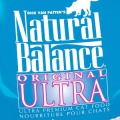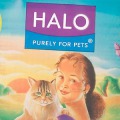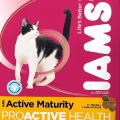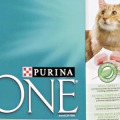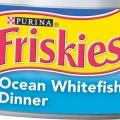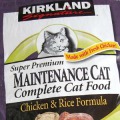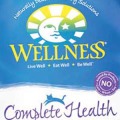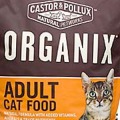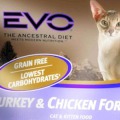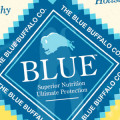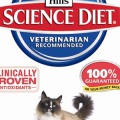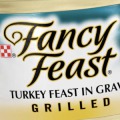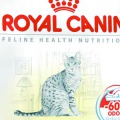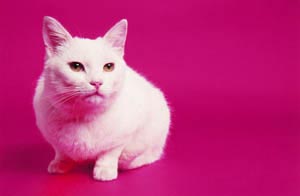 The commercials begin with a can being opened gently, with each tasty morsel spooned out into a crystal bowl. The dinner bell beckons.
The cat runs swiftly, anxious to begin such a luxurious feast. The owner watches nearby, glad to see that her cat's finicky behavior towards dinnertime is over.
In cat food commercials the owner seems to eat, if not exist, on the same level as the cat. Dog food is placed in bowls then lowered to the floor; not so with cat food.
The owner invariably follows the cat's lead, stretching out in comfort and relief that all is right with the world. She props her head on her hand, the cat a study in contentment.
How pet food is packaged, sold, and promoted mimics, or at least reflects, the larger view that there are "dog people" and there are "cat people."
The commercials begin with a can being opened gently, with each tasty morsel spooned out into a crystal bowl. The dinner bell beckons.
The cat runs swiftly, anxious to begin such a luxurious feast. The owner watches nearby, glad to see that her cat's finicky behavior towards dinnertime is over.
In cat food commercials the owner seems to eat, if not exist, on the same level as the cat. Dog food is placed in bowls then lowered to the floor; not so with cat food.
The owner invariably follows the cat's lead, stretching out in comfort and relief that all is right with the world. She props her head on her hand, the cat a study in contentment.
How pet food is packaged, sold, and promoted mimics, or at least reflects, the larger view that there are "dog people" and there are "cat people."
Belts were tightened, but apparently not collars
Little wonder. There are 38.9 million households in the United States that own cats - though most cat lovers would grant that "ownership," as commonly understood, is often a two-way street. Further, there are within those dwellings, a total of 86.4 million cats meaning that where there is one cat there is often at least one other, according to the American Pet Products Association (APPA).1 Cats may indeed display more independence for days on end, even being able to find food for itself out of doors, but they all come home for dinner at last. The sales of pet food was expected to jump 4%,2 to just under $53 billion dollars in 2012 over 2011, according to the same organization. With each household spending about $220 annually on cat food, producers are aware of how valuable the market is. What is more notable, however, is that even the most cursory survey of industry statistics shows a massive sales jump of about a billion dollars more in annual cat food sales over the past decade - a period of severe economic slump. Belts were tightened, but apparently not collars.
... the FDA ensures that standards are met within our borders even when components come from countries ...
Many factors are at play of course: the trend towards smaller families means that more and more homes can accommodate a pet; cats especially are more adaptable to smaller spaces so are ideal for apartment dwellers; and pet food manufacturers are putting more care into their product, with a consequent rise in consumer confidence. Cat food is such a lucrative market that ingredients are monitored by the federal Food and Drug Administration (FDA).3 While most of the food supplied comes from within the US, the FDA ensures that standards are met within our borders even when components come from countries with less stringent ideas of safety or label integrity.
Cat food, moreover, is not simply meat and vegetables assembled into some tasty stew
Cat food, moreover, is not simply meat and vegetables assembled into some tasty stew. The chemistry behind the composition could be crafted by nutritionists and dieticians - as indeed they are. The Pet Food Institute (PFI), a lobbying group for the industry, extols the care and reliability taken when producing food for the household tabby. Care is taken especially, says the PFI, to remove any trace or remote chance of bacteria or mold in cat food, as cats can be particularly vulnerable to food-borne illnesses. The APPA offers guidelines on its Web site outlining and enforcing strict adherence to guidelines set forth by the federal government and other pet associations. Higher end cat food is readily available with assurances of quality and universal appeal to the more choosy eaters of the feline world. Cat owners claim that the calming effect of cats can help their owners through miserable times such as having illnesses or during stressful periods so a splurge on upscale food might be a just reward. Female cats, which make up approximately 80% of single-cat households, are called queens, after all.
There is little reason to foresee a decrease in the amount of money spent annually on cat food. Cats above all are creatures of habit more than of training, and attempts to go off-market or shop with an eye towards lowering your cat food bill will meet with little success once the cat hears the clinking of spoon on bowl.
Joseph Logue, Contributor
References
1U.S. Pet Ownership & Demographics Sourcebook (2012): https://www.avma.org/KB/Resources/Statistics/Pages/Market-research-statistics-US-Pet-Ownership-Demographics-Sourcebook.aspx
22011/2012 APPA National Pet Owners Survey: http://www.euromonitor.com/dog-food-in-the-us/report
3How Wet Pet Food Is Made: http://www.petfoodinstitute.org/Index.cfm?Page=WetPetFood

